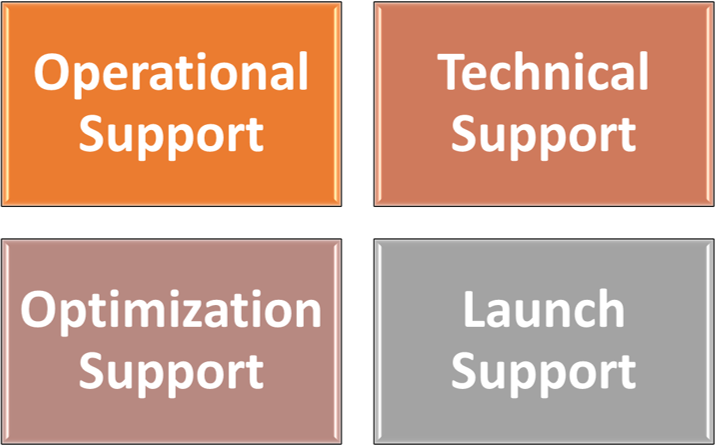Telehealth has taken the care delivery world by storm due to the Covid-19 health crisis. An esoteric way to receive care at best before March 2020, virtually every patient has heard about telehealth if not even tried it.
While the majority of so-called “telehealth visits” were conducted over the phone (for a variety of reasons), this mode of “practicing medicine at a distance” now opened the door for a more broad acceptance of telehealth as a viable alternative to the long-practiced “in-person” care.
With an increasing number of patients expecting that their physician offers a telemedicine option, what are the bare necessities of a telehealth program that would make an organization “rest at ease”?
Simple Telehealth Governance
In healthcare, the term “governance” often conjures up the image of a stuffy board room, filled with influential individuals and leaders from the business community, meeting to decide on the future of the organization they are “governing”.
In essence, however, good governance simply provides direction and accountability through a transparent, consensus process. And that is what is needed for telehealth to flourish at any organization.
A telehealth governance team — often called a steering team or a steering committee — is typically made up of leaders or representatives from all parts of the organization: leadership, clinical services, finance, operations, legal/compliance, marketing, and IT.
The three primary responsibilities of telehealth governance are to:
- Steer the expansion, growth, and continuous improvement of all telehealth services.
- Allocate resources and remove obstacles to accomplish the goals set forth.
- Provide accountability on the performance of telehealth and the initiatives.
While these are typical leadership responsibilities, the governance model promotes consensus-driven decision making across the various stakeholders, for example when priorities between different important initiatives are in conflict.
While the telehealth governance team in larger health systems may be a separate committee, many smaller organizations simply add the telehealth governance responsibilities to their existing leadership team.
A small healthcare organization, such as an FQHC or Community Health Center, may only have 4-5 telehealth services which typically would require spending less than an hour a month to fulfill the duties of effective governance.
The Four Flavors of Telehealth Support


The second “bare necessity” that’s crucial to telehealth success is the designation of resources to support telehealth across four different levels:
- Operational Support
- Technical Support
- Optimization Support
- Launch Support
Operational Telehealth Support is concerned by providing centralized assistance to the various telehealth services. That operational support typically does not include the day-to-day scheduling or patient-focused support, but rather the centralized support. Typical responsibilities include
- Provide Training & Orientation
- Collect & Track Performance Measurement
- Tracking and acting on new or updated regulations
- Address & solve issues
- Liaise with Technical Support
Technical Telehealth Support focuses on the technology aspect of telehealth — connectivity (such as WiFi or broadband), hardware (e.g., cameras, exam tools, or carts) and software (video conferencing tools or designated telehealth solutions).
- Conduct Maintenance/Updates of Technology
- Provide Technical Training
- Address & Resolve Technical Issues
- Support Selection of New Technologies
Telehealth Optimization Support is concerned with the continuous improvement of existing telehealth services — oftentimes to remove or address the underlying root cause of poor performance, such as frustrating experiences with telehealth by the patient or provider. The responsibilities here include the analysis of issues and the design of solutions to recurring problems. For larger improvement initiatives, planning and management of the initiative may be necessary.
Telehealth Launch Support provides formal project management and clinical service design expertise to aid in the development and launch of new telehealth services. During the onset of the Covid-19 health crisis in March 2020, launch support was virtually unavailable with IT staff mostly handing out equipment and video conferencing licenses with little to no guidance. Good launch support includes the planning, designing, and managing of the launch of new telehealth service, including service verification, definition, validation, and implementation in coordination with operational and technical support.
Essential Telehealth Support Functions
To provide the ongoing support across the four different types of telehealth support, it is important to have at least one named person for operational support and for technical support.
In smaller healthcare organizations, this does not have to be a new position and is often simply added to the responsibilities of an existing staff member. Typical titles for such a role include “telehealth coordinator” or for larger organizations a “director of telehealth”.
For the technical support role to be filled, it is often sufficient to identify an individual on the IT team to take on that responsibility as the primary contact for all things related to telehealth.
The optimization support role can be easily filled by members of the quality improvement team, if such a team exists, or are at times filled by outside experts (such as consultants from Ingenium).
While the project management aspect of the new telehealth services launch support oftentimes is assigned to an IT project manager, it is worth noting that the design of new care delivery processes, which is what telehealth is, requires expertise in designing clinical workflows which is oftentimes more readily found in a quality improvement team. For larger telehealth service rollouts it’s also advantageous to engage outside expertise – either in the form of a consultant or at least in the form of an advisor.
Enjoy the Bare Necessities
While Baloo, the bear from the 1967 Disney movie “The Jungle Book”, was rudely awakened from his relaxation (by the monkeys, snatching up Mowgli to bring him to King Louie), you on the other hand can “rest at ease” for a bit once you’ve implemented the “bare necessities” of telehealth: governance and support.
Once you’re ready for more, I recommend reviewing Ingenium’s Telehealth Capability Maturity Model – either as a webinar, a white paper, or a series of articles. You can also take an individual “Telehealth Maturity Model Self Assessment” on our website.








To receive articles like these in your Inbox every week, you can subscribe to Christian’s Telehealth Tuesday Newsletter.
Christian Milaster and his team optimize Telehealth Services for health systems and physician practices. Christian is the Founder and President of Ingenium Digital Health Advisors where he and his expert consortium partner with healthcare leaders to enable the delivery of extraordinary care.
Contact Christian by phone or text at 657-464-3648, via email, or video chat.







Leave A Comment